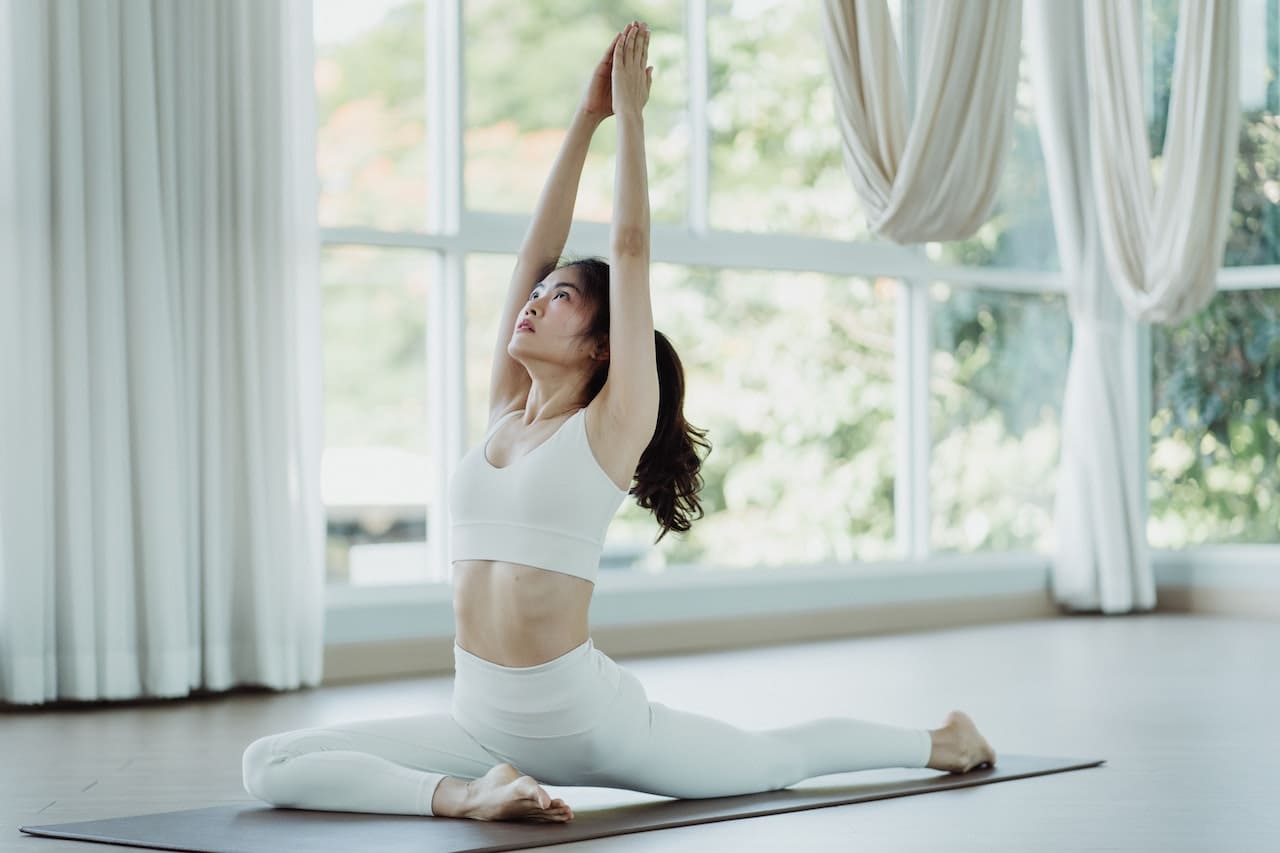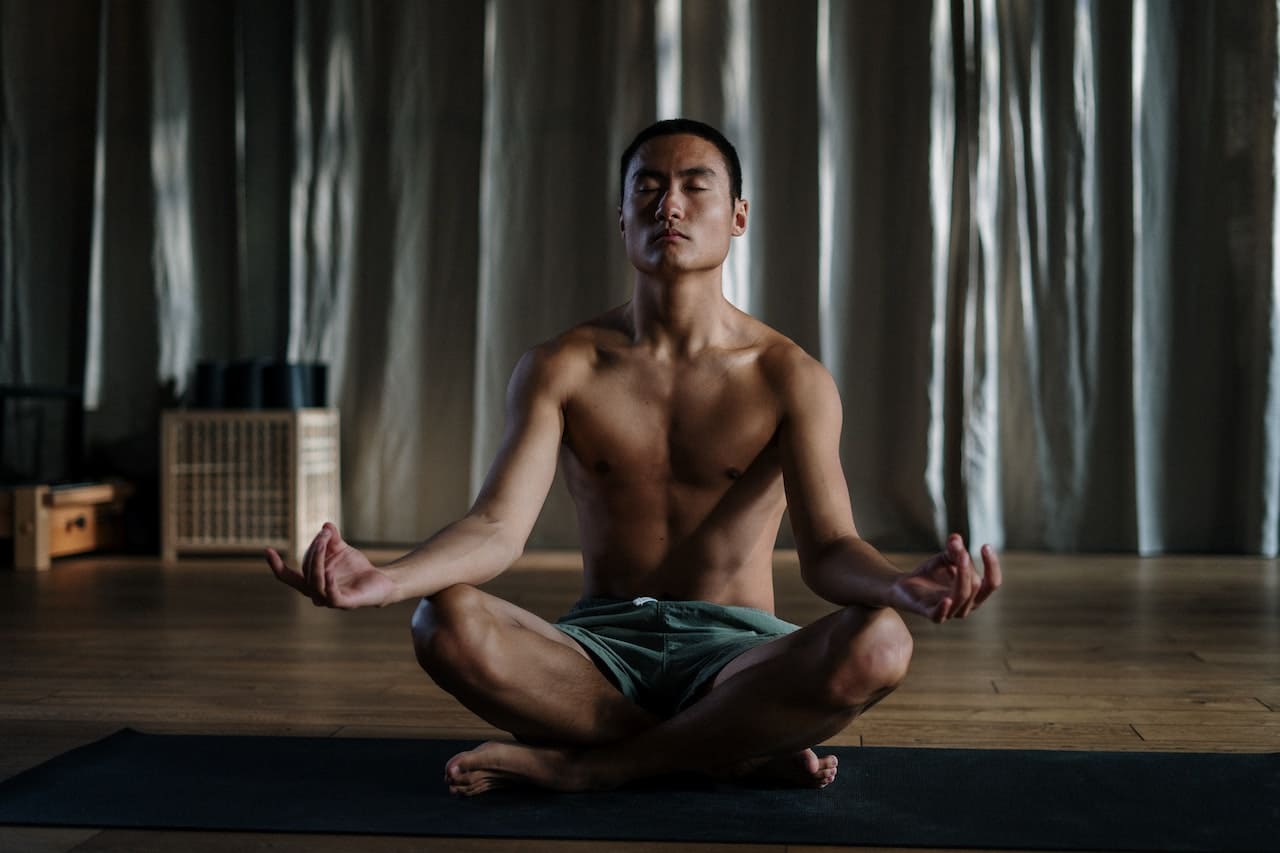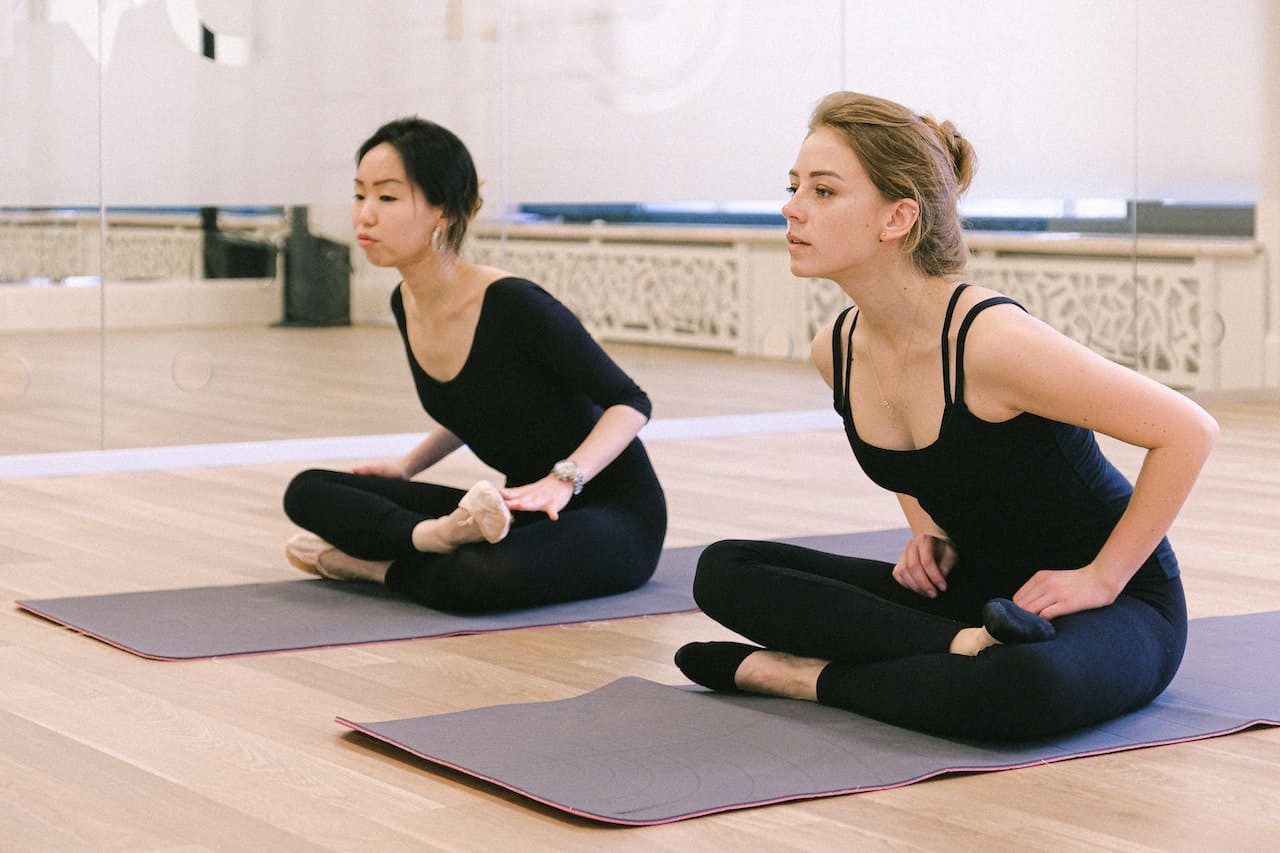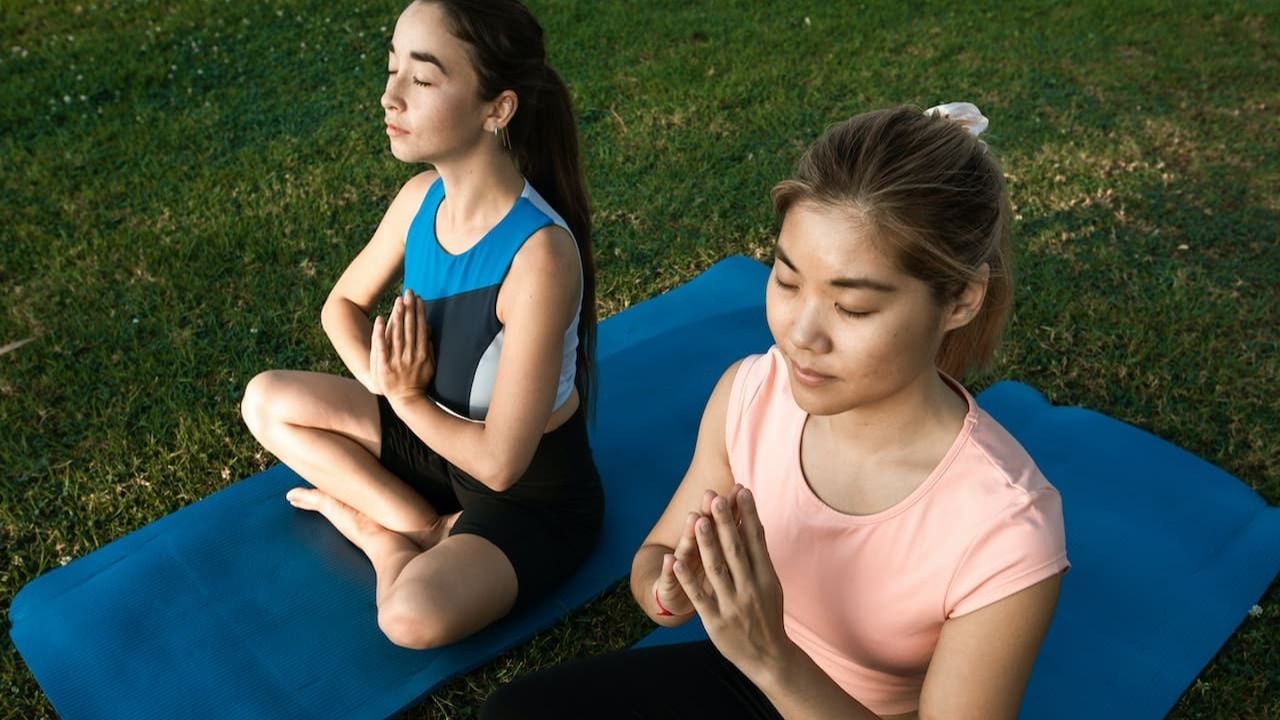What is Hot Yoga? What to expect, benefits, and more
Find out everything you need to know about hot yoga, what's best for you, and what to expect including its benefits.

Source: Pexels
Ever walked past a yoga studio and seen folks emerging, drenched in sweat, faces flushed with a mix of exertion and bliss, and wondered what’s going on in there?
Well, it’s probably a hot yoga class, a dynamic and steamy variation of traditional yoga that’s been gaining momentum across the globe. Let’s dive right into what this fiery practice is all about!
Hot Yoga, as the name subtly implies, is practiced in a room heated well above your average room temperature—think sauna vibes.
It’s like stepping into a sanctuary of warmth, where the air is thick, and each breath feels different, more profound perhaps.
The origins of this steamy yoga variation trace back to the 1970s. Bikram Choudhury, credited with the introduction of hot yoga, aimed to replicate the hot and humid climate of his hometown in India.
But why practice yoga in such intense conditions, you might ask? The heat is no arbitrary choice! It serves to intensify the workout, allowing practitioners to delve deeper into each pose, enhancing flexibility while sweating out toxins.
The idea is to blend the physical challenge with mental discipline, creating a holistic experience that can transform body and mind.

Source: Unsplash
Hot Yoga vs. Traditional Yoga
Ever wondered how hot yoga is different from the traditional yoga we all know? It's like comparing two siblings from the same yoga family. Let's dive in and explore the differences and similarities.
Hot yoga, conversely, unfolds in a room where the thermostat soars, often reaching up to 105°F (40°C), accompanied by high humidity levels.
This demanding environment serves to intensify the practice, elevating the heart rate, promoting excessive sweating, and encouraging a deeper stretch in each pose.
Despite these contrasting conditions, it is crucial to understand that the core philosophies and foundational principles of traditional and hot yoga are parallel, both aiming to foster a harmonious integration of mind, body, and spirit. Each form, heated or not, aspires to instill balance, tranquility, and self-awareness within the practitioner.
While traditional yoga envelops a broad spectrum of styles, each with its unique sequence and focus, hot yoga usually adheres to a fixed sequence designed to systematically stimulate and cleanse each part of the body.
The sequence in hot yoga aims to extract toxins and rejuvenate the body through intensive sweat.
A commonly held perception is that the elevated temperatures in hot yoga provide a facilitative environment for enhancing flexibility.
Conversely, purists of traditional yoga often maintain that true flexibility and mastery are gradual fruits of consistent practice, patience, and alignment, without reliance on elevated external temperatures.
The beneficial outcomes of both traditional and hot yoga are manifold, spanning increased muscular strength, improved posture, and enhanced mental clarity.
However, the intensified conditions of hot yoga might offer an added advantage of calorie burn and cardiovascular workout.
It is pivotal for each individual to approach yoga with attunement to one’s body, preferences, and needs. The choice between traditional and hot yoga is not about universal superiority but about individual resonance and alignment with personal goals and well-being.

Source: Pexels
5 variations of Hot Yoga
So, we’ve chatted about what sets hot yoga apart from its traditional sibling, but here’s where it gets even more interesting. Hot yoga isn’t just one fixed thing; it has its own world of variations and styles! Let’s dive into a few of them.
1. Bikram Yoga
Let’s start with Bikram, the one that kicked off the hot yoga trend. Created by Bikram Choudhury, this style is strict and structured, consisting of 26 postures and two breathing exercises, performed in a room heated to a sizzling 105°F with 40% humidity.
It’s a bit like a yoga boot camp, but many swear by its benefits!
2. Moksha Yoga
Next up, we have Moksha Yoga, or Modo Yoga, a more environmentally conscious and ethical variation. It consists of a series of postures performed in a room heated to about 99°F.
It’s designed to be accessible and beneficial to all, focusing on the reduction of stress and improvement of mental well-being.
3. Baptiste Power Vinyasa Yoga
Meet Baptiste Power Vinyasa Yoga, a style that combines heat, sweat, and powerful postures to deliver a transformative experience.
The room is heated to around 95°F, and the sequence focuses on flow and movement synchronized with breath, helping to develop strength and flexibility.
4. Forrest Yoga
Developed by Ana T. Forrest, Forrest Yoga aims to heal and strengthen the body and mind. It’s practiced in a warm room (not as hot as Bikram), and it encourages deep breathing and emphasizes the core.
It’s known for its ability to help with emotional healing, making it a holistic practice.
5. Hot Power Yoga
And then there’s Hot Power Yoga, a dynamic and energetic style. The room is heated, and the sequences are usually more vigorous, involving a lot of movement and a focus on building strength and endurance.
It’s a great choice if you’re looking to break a serious sweat and boost your energy levels!
9 benefits of Hot Yoga
Okay, let’s dive into the good stuff—why should someone consider hot yoga, and what makes it so special? Well, the benefits are manifold, extending beyond just a good sweat session. It’s like giving a gift to your body, mind, and spirit. So, let’s unwrap it and see what’s inside!
1. Detoxification
First up, let’s talk about sweat. Sweating it out in the heated room helps in flushing toxins out of the system. It’s like a mini spa session for your internal organs, leaving you feeling cleansed and refreshed!
2. Improved flexibility
The heat also does wonders for your muscles, allowing them to stretch and move with greater ease. You might find yourself reaching a little further, bending a little deeper, and discovering new realms of flexibility you never thought possible!
3. Enhanced respiratory function
Breathing in the warm air can help to open up the respiratory tract, making breathing easier and more efficient, especially for those with respiratory issues. It’s like a breath of fresh air for your lungs!
4. Cardiovascular boost
The elevated heart rate in a hot yoga class gives your heart a solid workout, improving cardiovascular health and endurance. It’s a bit like going for a run, but with more zen!
5. Mental clarity and stress reduction
There’s something about the focus and discipline required in hot yoga that sharpens the mind. The synchronized breath and movement can elevate your mood, reduce stress, and enhance mental clarity. It’s a mind-body workout that leaves you feeling grounded and balanced.
6. Enhanced skin health
Sweating can also be great for the skin, helping to clear out impurities and giving you that post-class glow. It’s like a natural facial, making your skin feel refreshed and rejuvenated!
7. Increased strength and toning
The various postures in hot yoga target different muscle groups, promoting strength, toning, and definition. It’s a full-body workout that helps you discover strength you didn’t know you had!
8. Weight loss and metabolism boost
And yes, the combination of heat and exercise can kickstart your metabolism and aid in weight loss. It’s like turning up the heat on your caloric burn, helping you shed those extra pounds!
9. Enhanced mood and emotional stability
Lastly, the release of endorphins, the increased oxygen flow, and the mindfulness aspect of hot yoga contribute to an improved mood and emotional stability. It’s like a happiness boost, leaving you feeling more positive and balanced!

Source: Pexels
Getting Started for a Hot Yoga class
Before you jump into the world of sweat and serenity, there are a few things to consider to make your experience enjoyable and beneficial. So, let’s prep you up!
1. Hydration is key
First things first—water, water, and more water! Begin hydrating hours before your class. When you're in a hot yoga class, you're going to sweat—a lot, so starting off well-hydrated is crucial.
And, don’t forget to bring a water bottle to class to sip on, and keep drinking water after class to replenish any lost fluids.
2. Eat light
You might want to avoid heavy, rich, or spicy foods before class. Trust me, a full stomach and hot yoga do not mix well!
Opt for a light snack or meal a couple of hours before class, think fruit or a small smoothie, just enough to keep your energy levels up without weighing you down.
3. Dress appropriately
When it comes to clothing, think light, breathable, and moisture-wicking fabrics. A sports bra, tank top, and shorts or leggings are usually good choices.
Remember, it’s going to be hot, and you’re going to be moving, so comfort is key!
4. Bring the essentials
Don’t forget to pack a large towel and a yoga mat. Some people also like to bring a small hand towel to wipe off sweat during class.
And, if you’re worried about slipping on your mat, a yoga towel can be a game-changer!
5. Arrive early
Get to the studio at least 15 minutes early. This gives you time to settle in, relax, and acclimate to the room’s temperature.
Plus, it’s a great opportunity to chat with the instructor about any concerns or questions you might have, especially if you’re new to hot yoga.
6. Keep an open mind
Finally, go in with an open and positive mindset. Hot yoga can be challenging, but it’s also incredibly rewarding.
Listen to your body, take breaks when needed, and remember, everyone’s experience is different, so don’t compare yourself to others.
Read also: The best 5 yoga studios for English-speaking expats in Mexico City
What's best for you & what to expect
You're armed with a bunch of info, but you might still be wondering, "Is hot yoga really my thing?" and “What should I actually expect when I step into that warm room?” Don’t worry, we’ve all been there, so let’s break it down.
Firstly, choosing the right yoga practice is a very personal thing—it’s like finding the right pair of jeans. What works wonders for one person might not sit right with another. It’s all about exploring different styles and seeing which one feels like a second skin to you.
When it comes to hot yoga, if you’re a fan of warmth, enjoy a good sweat, and are looking to challenge both your body and mind, then this could be your match! But, if the idea of exercising in high heat doesn’t appeal to you, there are plenty of other yoga styles out there to explore.
Now, stepping into your first hot yoga class, expect it to be, well… hot! The heat hits you as soon as you walk in, and yeah, it might feel a bit overwhelming at first, but give it a moment. Your body will start to acclimate.
Remember, it’s normal to feel a bit out of your element, but that’s part of the journey!
You’ll likely find yourself sweating more than you thought possible—yes, it’s intense, but it’s also incredibly cleansing. Every drop of sweat is like a little release, a way for your body to expel toxins and stress. It’s rejuvenating in a way that’s hard to describe, but it feels amazing!
And let’s talk about the post-class glow—you’ll probably step out feeling like a new person. There’s this incredible sense of accomplishment, a radiant energy, and a peace of mind that comes after pushing through a challenging hot yoga session. It's this feeling that keeps many coming back for more!
Lastly, always remember, the yoga journey is uniquely yours. It's not about performing the perfect pose or being the most flexible person in the room. It's about connecting with yourself, finding your balance, and enjoying the experience.
So, go ahead, try different styles, find what feels good, and embrace your journey with an open heart and mind!
Conclusion
By now, you’ve got a taste of the transformative power hot yoga holds, how it not only stretches your muscles but also challenges your mind, encouraging a beautiful synergy of strength, flexibility, and mental clarity.
Remember, yoga, in any form, is all about connection—connecting with your breath, your body, and your inner self.
Whether you prefer the calming ambiance of traditional yoga or the intensified, sweat-drenched environment of hot yoga, it’s about finding what resonates with you, what helps you grow, find balance, and attain that sought-after inner peace.
But, it doesn’t have to be an ‘either-or’ situation. Maybe you'll find joy in mixing it up, alternating between the tranquility of traditional practices and the fiery challenge of hot yoga, embracing the diverse experiences the world of yoga has to offer.
Whatever your yoga journey looks like, embrace it with an open heart and mind. Explore different styles, challenge yourself, and most importantly, have fun with it! Yoga is a gift, a path to self-discovery and well-being, so enjoy every step, every breath, every moment of it.
So, why wait? Roll out that yoga mat, grab a water bottle, and step into the empowering world of hot yoga. You might just discover a passion you never knew you had!
Friska 🐨
Read next: What is chair yoga and its benefits for seniors?
FAQs (Frequently Asked Questions)
1. How hot is a hot yoga class?
Typically, hot yoga classes are heated to around 105°F (40°C) with a humidity of 40%. However, the intensity might vary depending on the studio and the type of hot yoga you choose.
2. Can hot yoga help with weight loss?
t can indeed! The combination of heat and movement can boost metabolism and calorie burn. Plus, the strength-building postures can aid in muscle development and toning.
3. Is it safe to do hot yoga every day?
While it can be safe for some, it’s essential to listen to your body’s signals. Rest is crucial, and overdoing it can lead to burnout or injury. Moderation is the secret ingredient to a sustainable hot yoga practice!
4. Can I eat before a hot yoga class?
It’s best to eat light! A heavy meal can make you feel uncomfortable during the intense poses. Opt for a small, nutritious snack about 2 hours before class to maintain energy levels without feeling weighed down.
5. What if I feel dizzy or nauseous during class?
It’s important to listen to your body. If you feel dizzy or nauseous, it’s best to take a break, sip some water, and rest in a comfortable pose. If the feeling persists, it’s okay to leave the room and cool down.
Source:
- Hot yoga: Benefits, safety, and more (medicalnewstoday.com)
- Hot Yoga 101: What To Expect, the Benefits, and More (byrdie.com)
- What is hot yoga? | Live Science
Do you want to see more content like this? Follow us on Instagram and Facebook for more wellness advice, fitness trends, workout inspiration, and even best health and fitness deals exclusive to our followers. Don’t miss out!

